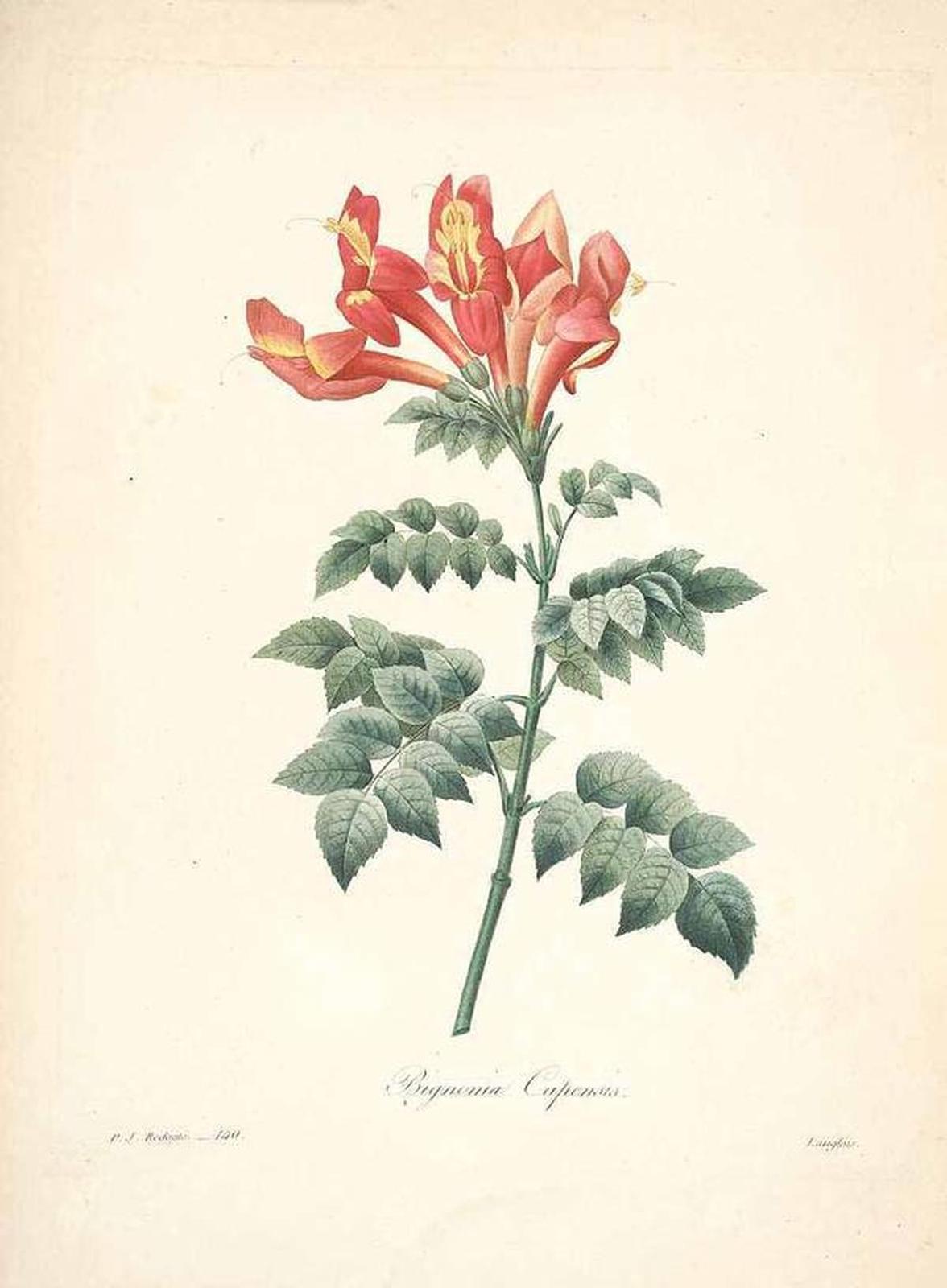Tecoma capensis (Thunb.) Lindl.
BignoniaceaeEsta especie, que frecuentemente trepa muros o emparrados y que en el Alcázar lo hace sobre el tronco de una palmera proviene, como su propio nombre indica, de la región del Cabo, localizada en el extremo sur del continente africano. Un área biológica que se caracteriza por ser una de las más pequeñas pero de mayor riqueza biológica de África, y donde podemos hallar más de 1.100 plantas, muchas de ellas endémicas, como el agapanto, la clivia, la flor del paraíso o la bignonia del Cabo, que también aparecen representadas en el Alcázar de Sevilla. Dicha región fue avistada primeramente por un europeo en 1488. Nos referimos a Bartolomé Díaz, cuyo viaje dio paso a lo posteriormente fue llamado la “Era de los descubrimientos” y que involucró a España y Portugal en una carrera por llegar a las Indias a través de rutas alternativas a las monopolizadas por la República de Venecia. Los primeros en conseguirlo fueron los portugueses utilizando la vía del Cabo de Buena Esperanza en un viaje capitaneado por Vasco de Gama. Dicha expedición comenzó en 1497, cuatro años después de que Cristóbal Colón viajando bajo la bandera española creyera haberlo logrado, aunque lo que descubrió fue América. Así la ruta occidental tuvo que esperar hasta 1519 para efectuarse a manos de Magallanes y El Cano. Una expedición que tuvo a Sevilla como punto de partida y llegada y el Cabo de Buena Esperanza como una de las etapas de regreso. Un desafío este que lograría no solo la creación de una ruta alternativa, sino la consecución de la primera vuelta al mundo.
Procedencia
AfricanoCalendario
Hábitat
Morfología
 Enredadera
Enredadera
 Extendida
Extendida
 Pinnada
Pinnada
 Ovada
Ovada
 Elíptica
Elíptica
 Romboidal
Romboidal
 Opuesta
Opuesta
 Serrulado
Serrulado
 Cuneada
Cuneada
 Agudo
Agudo
 Perenne
Perenne
